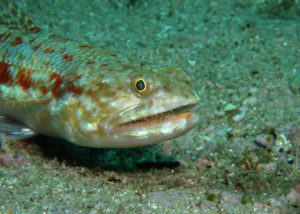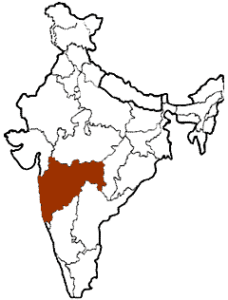The lizard fish or California Lizardfish fish are members of the Synodontidae family which in turn is also part of the Aulopiformes order.
These creatures belong to the marine environment and in some cases they can be found at the mouths of the sea. They are mainly distributed in waters that belong to the Atlantic, Indian and Pacific oceans.
Table Of Content
Taxonomy
Phylum: Chordata • Subphylum: Gnathostomata • Class: Actinopterygii • Subclass: Teleostei • Superorder: Cyclosquamata Order: Aulopiformes • Suborder: Synodontoidei • Family: Synodontidae Genus: Synodus • Species: synodus
Main Traits of Synodontidae Family
This family is recognized for being benthonic fish, that is to say that they live mainly in the seabed, since it’s there where they develop and meet their basic needs such as food and reproduction.
Now, another important fact regarding the Synodontidae family is that this name has a Greek origin, since “syn” has a meaning of all together and on the other hand “odous” means teeth or dental pieces.
For this reason these creatures are known under this name because of their particular denture that makes them easy to recognize in the aquatic environment.
It should be noted that this family of lizard fish or crocodile are also considered as teleost fish. This is mainly due to the fact that it complies with the main features in its anatomy regarding this aspect.
Lizard Fish: General Descriptions
These fish have a certain bodily resemblance to lizards, and they also share the habit of remaining mimetized motionless in the background on the lookout for their prey. They feed mainly on small fish.
Lizard Fish: Anatomy
The body of the lizard or crocodile fish is cylindrical and thin in most cases. On the other hand, these animals have a relatively large mouth compared to other known fish families.
 The main characteristic that stands out in all species of lizard fish are their particular dental pieces, since they have their mouth armed with long and thin teeth, which depending on the species can vary in different sizes and shapes.
The main characteristic that stands out in all species of lizard fish are their particular dental pieces, since they have their mouth armed with long and thin teeth, which depending on the species can vary in different sizes and shapes.
In turn it has about 40 to 67 vertebrae. And in the same way it has 8 to 26 gill membranes.
On the other hand, in relation to the appearance of lizard fish it worth mentioning that their eyes are located just at the end of the mouth.
This fact makes a difference with other species of fish, where the mouth is usually located at a certain distance from the eyes.
For the lizard or crocodile fish these organs are quite close. It should be noted that the name of lizard fish is attributed due to the shape of their head that resembles that of these land animals. Among other aspects of the body of lizard fish, it stands out that the dorsal fin is in the center of the back, and accompanied by a small fat fin located closer to the tail. We invite you to read our article the anatomy of fish to learn about such an interesting topic
The Lizard fish’s Body color
With regard to the colors of these fish, it’s difficult to specify in general, since in all species the hues usually change depending on the genus.

Although usually all the species in this group have in common that their body has some spots on the skin that are their most distinctive traits.
It should be noted that the color in the case of lizard fish means a main feature, since the spots on the body of this fish have their raison d’etre.
The variety of tones combined with the spots allows them to camouflage in their surroundings.
Thus being a tool to escape from its main predators. This is how the lizard fish has several lighter and darker marks, many of these species being reddish in color.
Size
Another important aspect within the characteristics of the lizard fish is that in terms of size despite the fact that some tropical species can reach 70 centimeters in length the most common is that most species don’t exceed 20 centimeters in total length . Then you can say that this family doesn’t stand out for its large size.
Let’s learn a little bit about teleost fish
Are Lizard Fish Edible?
For those who feel the restlessness of knowing if the lizard fish are edible we can say that although  their meat is edible, it’s below anyone’s expectations, so their trade in this area is really low. It may not be the best option in fish, but it may well be worth giving yourself a chance to try.
their meat is edible, it’s below anyone’s expectations, so their trade in this area is really low. It may not be the best option in fish, but it may well be worth giving yourself a chance to try.
Types of Lizard Fish
There are many genera within the Synodontidae family, as well as different species that vary in some characteristics but generally remain within the same concept and definitions of such a family.
In turn, subfamilies are made-up that improve the classification of this species in terms of its main characteristics.

It should be noted before entering the descriptions of each genus that make up this family, that the Synodontidae contain about 65 species, which are distributed in the four genera below.
Although some characteristics change within these different species, it depends on the genus to which it corresponds.
It’s important to note that a characteristic will always predominate and for which the lizard fish will be easy to recognize, this is its abundant dental pieces that the differences of the other species of common fish.
Subfamily Harpadontinae
Harpadontinae are a subfamily of lizard fishes in the Synodontidae family.
Genus Harpadon
In turn this genus is made up of teleost fish, that is, fish that have a bone skeleton and complete and biconcave vertebrae.
Within this genus are the following species Harpadon erythraeus, Harpadon microchir, Harpadon nehereus, Harpadon squamosus, Harpadon translucens.
Harpadon nehereus or Bombay duck
In relation to the above, the most recognized species within this genus is Harpadon nehereus, whose common name is Bombay duck.
This species lives in the tropical areas of the Indo-Pacific.
In this way it has been traditionally captured in the waters of Maharashtra in the Lakshadweep Sea, where it’s an important piece of the annual catch so its valuation is really considerable.
This fish belonging to the Harpadon genus is also caught in the Bay of Bengal and in the South China Sea, although in smaller numbers
Bombay duck is usually dried and salted before being consumed, since its meat lacks the lizard fishes’ distinctive flavor.
After drying, the smell of the fish is extremely powerful and intense, for this reason it’s usually transported and mobilized in airtight containers. Bombay duck is a popular food in certain areas of India. Fresh fish are usually fried or cooked in curry.
Anatomy
During adulthood the Bombay duck reaches a maximum length of 40 centimeters, but the usual size is around 25 centimeters.
As for their body it’s elongated and compressed, their eyes are small and the snout is considered very short.
On the other hand, as far as the mouth is concerned, it’s very broad armed with the typical thin teeth of these species, recurred and foldable of unequal size.
On the other their jaw is longer than the top armed with palatine teeth also large and reprehensible
Their dorsal possess 11-12 rays, followed by a conspicuous fat fin. Anal fin with 14-15 rays. Pectoral fins 10-12 rays longer than head length.
Very long pelvic fins with 9 rays. Lateral line with 40-44 slaves, extending over the median lobe of the caudal fin.
 As for the appearance of the Bombay duck fish, it can be said that it’s a uniform colored fish unlike all the fish that make up the Mediterranean lizard fish family.
As for the appearance of the Bombay duck fish, it can be said that it’s a uniform colored fish unlike all the fish that make up the Mediterranean lizard fish family.
So usually the Bombay fish comes in light gray tones and has a semi-transparent appearance, this is a similar one that it shares with the transparent fish.
Behavior
Regarding the behavior of the Bombay duck fish it worth mentioning that it’s considered a bentopelagic fish , this means that it lives in the deep waters especially in the high seas area and usually during most of the year.
However, they also meet in large banks in river deltas to feed during the monsoons.
When housed in fish tanks Bombay ducks are regarded as aggressive predators thanks to their hunting skills. On the other hand, in terms of their diet, it should be noted that it consists of a variety of species, although they usually feed on small fish.
Let’s watch how they catch them
Genus Saurida
This genus is made up of 22 species of lizard fish beingmade up of teleost fish but shouldn’t be confused with the lizard fish from the Lepisosteus osseus river.
 The names of the most releavant species are : Saurida argentea, Saurida brasiliensis, Saurida caribbaea, Saurida elongata, stringy Saurida, Saurida golanii,
The names of the most releavant species are : Saurida argentea, Saurida brasiliensis, Saurida caribbaea, Saurida elongata, stringy Saurida, Saurida golanii,
Saurida gracilis, Saurida grandisquamis, Saurida isarankurai, Saurida longimanus, Saurida macrolepis, Saurida microlepis, Saurida micropectoralis, Saurida nebula, Saurida normani,
Brushtooth lizardfish.
It should be noted that among these species the most recognized of the genus saurida is Saurida undosquamis or Brushtooth lizardfisha.
This species usually inhabits the waters of the Red Sea, in part of the Middle East, that is, in areas that comprise the continent of West Africa and the Pacific Ocean. In other cases it can also be  found in the waters of the Mediterranean Sea.
found in the waters of the Mediterranean Sea.
In the same order of ideas, as for the general descriptions of this species it’s known that they can reach about 15 centimeters and up to 25 centimeters, and even species of about 40 or even 50 centimeters in total have been found.
It usually occurs in shades of cream brown colors in their back, since in the ventral zone it has lighter colors.
Anatomy
 Regarding the appearance of the Brushtooth lizardfisha, it can also be said that these animals have some spots, usually along their body.
Regarding the appearance of the Brushtooth lizardfisha, it can also be said that these animals have some spots, usually along their body.
On the other hand, the head of the Brushtooth lizardfisha is known for being flattened and as a peculiarity of its family Synodontidae has some dental pieces that are really visible and easy to recognize among other species.
These teeth can be easily observed even when the animal has its mouth shut.It’s also important to take into account that among other particularities of the Brushtooth lizard fish, it possesses between 50 and 53 vertebrae.
In addition, it’s captured by the fishing fleets of various countries being the leading countries Egypt, Israel and India, where it’s usually consumed fresh and in various dishes that complement the cuisine of the respective countries.
Subfamily Synodontinae
Regarding this subfamily of Synodontidae fish, it should be noted that it’s made up of two genera.
Genus Synodus
In this way, with regard to this genus, it should be noted that it’s made up of a variety of species, that a more specific aspect would be a total of about 38 species that make it up.
Genus Trachinocephalus
The peculiarity of this genus is that it includes a single species, that is, the Trachinocephalus myops species.
Among the peculiarities of this species is that they are animals that inhabit shallow depth, that is, they are usually seen up to 400 meters deep, which would be the maximum for this genus.
On the other hand, in terms of distribution it can be said that this species covers the main waters of the world, that is, they belong to almost all oceans. And particularly they are typical of the reefs.
Let’s enjoy them again
Lizar fish: Habitat and Distribution
As for the distribution of lizard fish, it must first be taken into account that these fish are found in all tropical and subtropical seas of the world, although they are usually more seen in the waters that correspond to the Mediterranean Sea.
On the other hand, it’s important to point out that most of the fish that make up the Synodontidae family frequent sandy bottoms in relatively shallow waters, that is, in environments near coral reefs or rocks.
This becomes another specific feature of the lizard fish, its shallow seabed being its ideal habitat.
In this sense, the depth will vary depending on each species, although they aren’t usually seen more than 400 meters.
According to the above specifications, the lizard fish family can be listed as benthic species, that is, species belonging to the seabed.
These animals in turn tend to prefer sandy environments, because in most cases they have body colors that help camouflage them in such environments this being the main reason why they are in that places.
In relation to the above, although they are known for wandering in the seabed in some cases the lizard fish can even reach the coasts and bays, it all depends on the species that is the case.
Let’s enjoy them again
What do Lizard Fish Feed On?
These animals are known to be skilled predators of smaller fish species. There is no doubt that they make use of their useful and sharp dental pieces to stock up on food when necessary, so the lizard or crocodile fish is considered another of the predators present in the seabed.
Among their eating habits it’s known that to stock up on the necessary food and comply with their diet these animals in order to guarantee a more effective hunt meet in large schools to feed during specific seasons.
It should be noted that lizard fish are considered as voracious and aggressive carnivorous fish when feeding.
Usually according to various studies these species tend to feed on other species of small fish and varieties of crustaceans like crabs
They have an advantage when capturing their prey since these lizard fish are well camouflaged and can be buried in the sand, leaving only their eyes and all this while they wait to pass their favorite prey, so that their victims don’t have time to take precautions when catching lizard fish.
Another of the habits worth mentioning is that when lizard fish is looking for food, remains still on the rocks or corals while waiting for the other species of fish around it to move. Thanks to its camouflage capacity, corals can be differentiated without being noticed by their victims.
Among other important considerations that should be noted is that without a doubt the feeding abilities of these animals are due to the effective and frightening teeth they have, this is usually similar to the abundant denture of the wolfish.
let’s watch how they camouflage
How do Lizard Fish Reproduce?
It’s important to highlight that lizard fish are mostly fish with hermaphroditic characteristics. In other words, individuals have both male and female reproductive tissue at the same time, but in this case the sexes are usually separated (dioecious).

On the other hand, it should be noted that the species that make up this family often live and develop in pairs. Now, as regards the process as such, it should be noted that fertilization is carried out externally.
However, when the reproduction process occurs to give life to the lizard fish, once the pelagic larvae are born, it should be noted that these animals have a series of 3-13 paired black pigment spots that run along the intestine.
This pigment is retained internally in the intestine after settlement.
Lizard fish’ Trade
The species that make up the family of lizard fish don’t usually have commercial value in most Australian waters, this is because the meat of this animal within the trade is considered of low quality, and even the most Popular is marketed at a low cost within the market.
As for this popular species in trade, it should be noted that it’s a type of lizard fish that is very  popular, it’s known as the Bombay duck and is usually found in South and Southeast Asia.
popular, it’s known as the Bombay duck and is usually found in South and Southeast Asia.
In the same order of ideas, it’s important to point out that what is known about this trade in the Bombay duck is that they are captured in bottom trawls, and with nets of nets, that is, with net bags with which they proceed to catch them against tidal currents.
However, in relation to this it’s known that the largest catches occur in India and Indonesia. Meat of this genus Harpadon is sold fresh, salted, dried or smoked. Other species are regularly taken as bycatch in trawl fisheries.
As for the estimates of this trade according to data from various studies, it’s taken as a reference that by 2014 a production of more than 257 206 thousand tons of Bombay duck fish was covered, this has been a number that has grown according to the years, since for the year 2005 the fishing of this species didn’t reach 200 thousand tons of specimens.
Another interesting fact regarding the trade and fishing of the Bombay duck fish is that mainly this animal is trapped along Maharashtra and with the help of a net bag, this is better known as “dol” net.
Regarding the operation of this gear, it can be said that in the first place it has the capacity to be timed at a strong tidal current, which is a great contribution to the fishing of this animal.
Since once with the bag with the mouth properly adjusted against the current this causes it to be subjected to the lizard fish that is being retained by the force of the current to facilitate its capture even before the intense tides that are particular to the habitats of these animals.
Then, in relation to the above, it can be said that the network recovers well before the tide turns or becomes even more intense. In this way it should also be noted that the animal can be caught with bottom trawls in the defect of the net-bag.
Let’s enjoy them again
